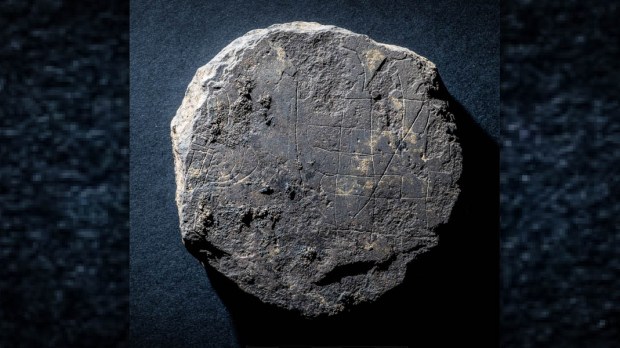The Book of Deer is a handwritten book of Gospels dated to the 10th century. While the manuscripts that the Book of Deer resembles the most are Irish, scholars have tended to argue for a Scottish origin. Written in Latin, Old Irish, and Scottish Gaelic, it is considered to contain the earliest surviving Gaelic writing from Scotland, making it an important piece of Scotland’s cultural history.
Archaeology News Network has Dr. Michelle Macleod, lecturer in Gaelic at Aberdeen University, explaining the significance of the manuscript:
“The Gaelic notes in the book are the first written examples of Scottish Gaelic. There are some deviations in the language from the shared common Gaelic of Scotland and Ireland which had been used in earlier manuscripts. These deviations, of which there are several, are the first written indication that the languages are separating and would be an indication of what people were likely saying. “The Book of Deer is a tiny book but it has left a huge legacy for us, not only in the north-east but for the whole of Scotland. We had to wait another 200-300 years after the Book of Deer to find any more evidence of written Scottish Gaelic.”
A group of archaeologists and interested citizens formed the Book of Deer Project, a Scottish charitable incorporated organization that has been working since the 1990s to discover the exact location of the lost monastery in which the Book of Deer was penned.
New discoveries of a hearth and charcoal dated between the 12th and 13th centuries came earlier this year, when the Book of Deer Project changed their focus from fields around the village to land closer to Deer Abbey, the remnants of which still stand. Now, the discovery of a medieval-era game board has the team believing they are closer than ever to discovering the site of the lost monastery.
Layers of charcoal excavated from underneath the disc-shaped game board were dated between the 7th and 8th centuries. While this is significantly older than the Book of Deer, the find suggests that the site was active in the time leading up to the writing of the Book of Deer.
Anne Simpson from the Book of Deer Project said, “The rare gaming board was the star find of the dig, but it’s the carbon dating which really thrills me, being so tantalizingly close to the period of the monastery.”
The find has led many of the experts who work with the Book of Deer Project to believe that the long search for the lost monastery of Aberdeenshire is coming to a close. Bruce Mann, archaeologist for Aberdeenshire Council, commented:
“This radiocarbon date excitingly places at least one of the newly excavated structures in the 8th Century AD.” He added, “While this is earlier than the 10th Century writings, it still provides the first confirmed evidence of any activity before the 13th Century. “I genuinely think we’re close to solving this long standing mystery.”

